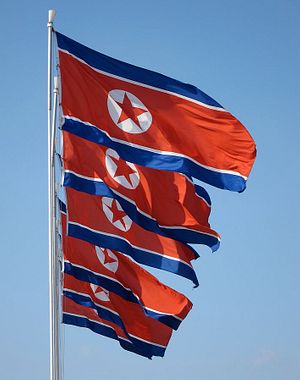North Korea fired two short-range ballistic missiles (SRBMs) into the ocean off its east coast, South Korea’s Joint Chiefs of Staff (JCS) said on Saturday. According to the JCS, the missiles flew about 350 km with a max altitude of 30 km from the Sunan area of Pyongyang, the capital of North Korea, between 6:45 a.m. and 7:03 a.m. KST.
Saturday’s launch marked North Korea’s fourth round of ballistic missile tests within a week. On Thursday, September 29, hours after U.S. Vice President Kamala Harris wrapped up her trip to South Korea, North Korea had launched two SRBMs off its east coast. The North also launched two SRBMs on September 28 and one on September 25.
Considering the performance of the missiles tested on Sunday, North Korea might have launched KN-24 or KN-25 missiles, as the altitude was relatively low. However, the Japanese Defense Ministry said the missiles appeared to be the North’s KN-23 Iskander-class missile on the basis of their “pull-up” maneuver in flight.
The South Korean military again called the North’s ballistic missile launch “a grave provocation” and urged it to “immediately halt” the missile tests as they are clear violations of multiple U.N. Security Council resolutions.
The North’s latest SRBM launches were carried out hours before South Korean President Yoon Suk-yeol gave a speech marking Armed Forces Day on Saturday. Speaking at the Gyeryongdae military headquarters, Yoon said North Korea will face a “resolute” and “overwhelming” response from the South Korean military and the South Korea-U.S. alliance if it attempts to use nuclear weapons. He also defined the North’s nuclear weapon development as a “direct confrontation” against the non-proliferation regime of the international community.
With North Korea’s codification of a new law to authorize preemptive use of its nuclear weapons under certain conditions, Yoon said that the North is threatening “the security and prosperity of the South.” While urging North Korean leader Kim Jong Un to denuclearize his country, Yoon mentioned that the North’s nuclear weapon developments will put its people’s lives in jeopardy.
As tensions on the Korean Peninsula have escalated with the North’s resumption of its ballistic missile tests and the South Korea-U.S. joint navy drills last week, Yoon assured that his military will keep a firm military readiness posture to protect the life and property of the South Korean people.
The North’s ballistic missile launches were a “tit-for-tat” response to the South Korea-U.S. joint naval exercises involving the nuclear-powered aircraft carrier USS Ronald Regain last week. Along with this, South Korea, the United States, and Japan conducted their first trilateral anti-submarine drills on the east coast of the South since 2017.
Seoul has reinvigorated the South Korea-U.S. joint military drills since Yoon took office in May, while Pyongyang has taken steps to consolidate its power as a nuclear weapons state.
Saturday’s missile launch was North Korea’s eighth since Yoon took office. In addition, North Korea seems to be prepared to test a submarine-launched ballistic missile (SLBM), according to satellite imagery and analysis released by 38 North, a U.S.-based think tank that monitors North Korea.
With the South’s National Intelligence Service also warning that North Korea’s seventh nuclear test could occur between October 17 to November 7, the power game between the two Koreas will likely be intensified with no room for diplomacy.

































